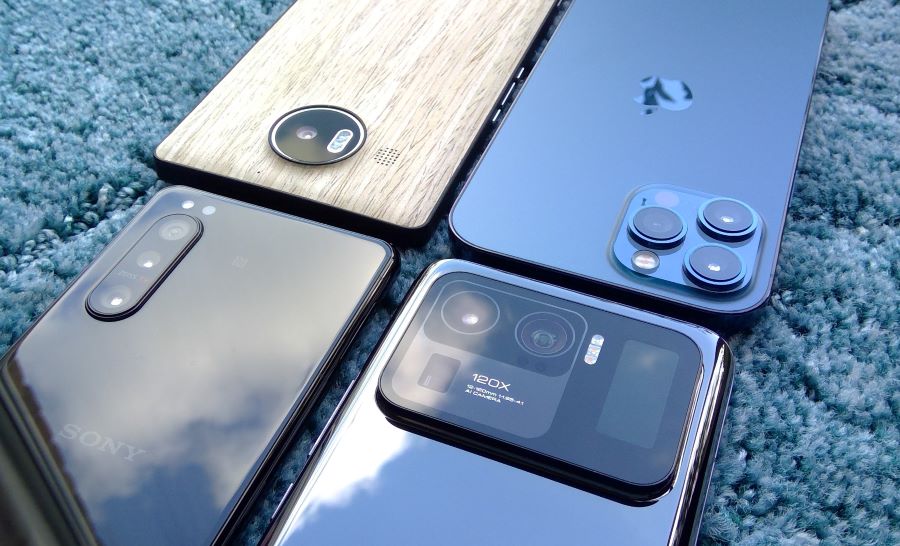
As ever, a reminder of raw specifications and imaging features:
| Microsoft Lumia 950 XL (2015) | iPhone 12 Pro Max (2020) | Sony Xperia 5 ii (2020) | Xiaomi Mi 11 Ultra |
|
Dedicated two-stage shutter button/launch key 20 MP RGB sensor (oversampled to 8MP here), f/1.9, 1/2.4", PDAF, OIS Dual capture, image combination |
12 MP RGB sensor, f/1.6, 1/1.9" main sensor, Multiple frame stacking |
Dedicated two-stage shutter button/launch key Multiple frame stacking when needed |
50 MP, f/2.0, 24mm (wide), 1/1.12", Dual Pixel PDAF, Laser AF, OIS Multiple frame stacking when needed |
Some notes on my methodology:
- All shots were handheld and on full auto, as a regular user would, in 16:9 mode, meaning 9MP output, approx.
- On the Xperia, I was using the supplied Sony Photography Pro app as my default camera app, rather than the generic Android affair.
- On the iPhone, I used its ProRAW capture setting. Not to do anything with the RAW files, but because this (in theory) misses out edge enhancement and sharpening.
- Zoom tests on the Lumia are hampered by the Camera UI, which doesn't give digital readouts of zoom factor. It's also limited to about 4x.
READERS NOTE: the layout of the crops below will depend slightly on which device you're reading the article on. As designed, the crops should appear in a 2x2 grid (hence the 'top row' comments), but on some small screens you may see the crops (in the stated order) stacked vertically.
Test 1: Sunny landscape
As always, I start with a really easy test. Sunshine all round, plenty of light. Here's the whole scene, with both artificial detail and greenery:
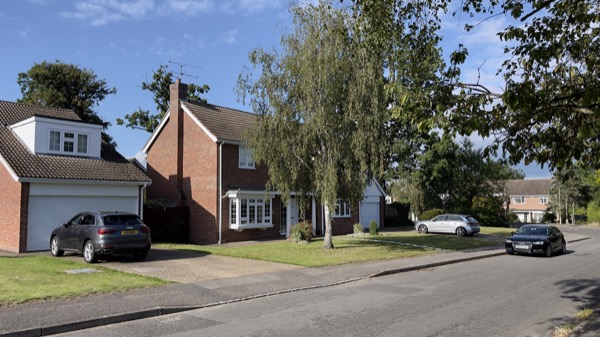
And here are the original photo files, click to download, from Lumia 950 XL, iPhone 12 Pro Max, Xperia 5 ii, and Xiaomi Mi 11 Ultra.
To see what's going on at the pixel level and to assess purity, here are central 1:1 crops from in turn, (top row) the 950, the iPhone 12 Pro Max, (bottom row) the Xperia 5 ii, and the Xiaomi Mi 11 Ultra:
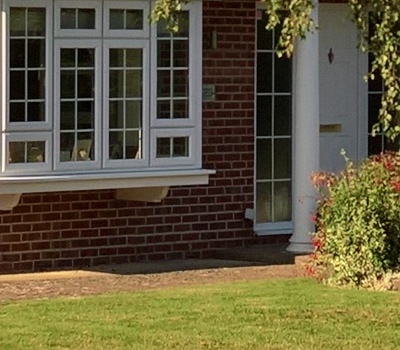
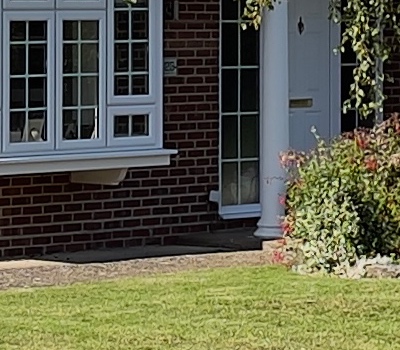
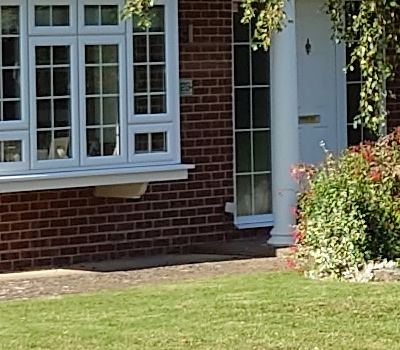
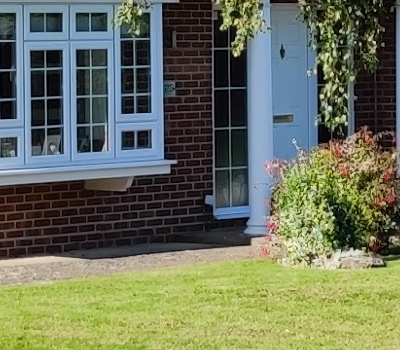
Considering that we're looking down at the pixel level, results are good from all four phones - the Lumia and Xiaomi edge ahead with slightly more detail and less compression, though the Lumia then loses a point for its usual yellow cast for sunny scenes - everything looks just a little too warm.
Scores: Lumia 950 XL: 9 pts; iPhone 12 Pro Max: 9 pts; Sony Xperia 5 ii: 9 pts; Xiaomi Mi 11 Ultra: 10 pts
Test 2: Aerial zoom set-up, overcast
No, not that sort of aerial - I hate flying 8-) But there's a St John's radio mast near us that is both out of reach, being up in the air, and also has loads of intricate detail. I'll be looking as-is, then 3x zoom, then 5x zoom, for this test. Here's the whole scene:
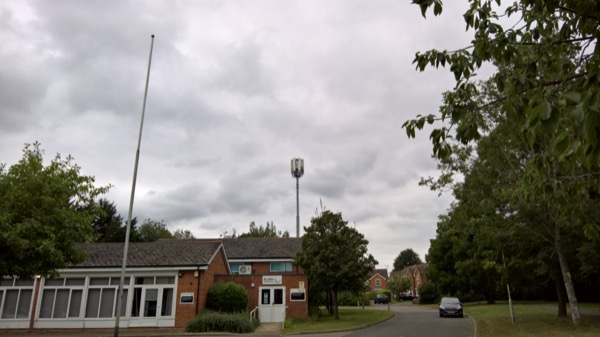
And here are the original photo files, click to download, from Lumia 950 XL, iPhone 12 Pro Max, Xperia 5 ii, and Xiaomi Mi 11 Ultra.
To see what's going on at the pixel level and to assess purity, here are central 1:1 crops from in turn, (top row) the 950, the iPhone 12 Pro Max, (bottom row) the Xperia 5 ii, and the Xiaomi Mi 11 Ultra:
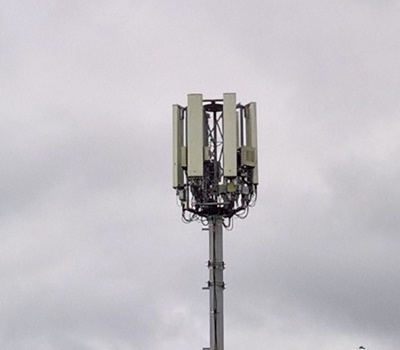
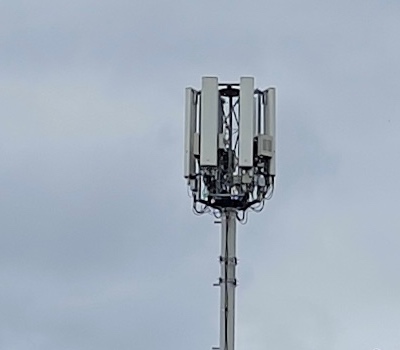

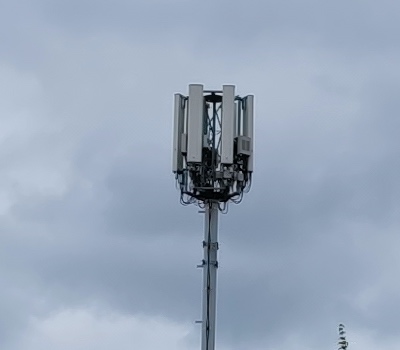
Stunningly good landscape detail from all four phone cameras under uncertain and overcast conditions. Maybe the Mi 11 Ultra just wins this one, but only by a hair. I'm giving full points all round, despite the differences in sky white balance - I honestly can't say which one is more accurate, retrospectively!
Scores: Lumia 950 XL: 10 pts; iPhone 12 Pro Max: 10 pts; Sony Xperia 5 ii: 10 pts; Xiaomi Mi 11 Ultra: 10 pts
Test 3: Aerial, 3x zoomed
The same scene, but zoomed to 2.5x/3x zoom (depending on device and UI), and tapping to focus in each case on the aerial cluster. The Lumia is way out of its league here, of course, with lossy digital zoom over 1.5x. While the new Mi 11 Ultra is using part smart-cropping, part lossy digital zoom, part multi-camera composition, but with superb algorithms for doing so.
Here are the original photo files, click to download, from Lumia 950 XL, iPhone 12 Pro Max, Xperia 5 ii, and Xiaomi Mi 11 Ultra.
To see what's going on at the pixel level and to assess purity, here are central 1:1 crops from in turn, (top row) the 950, the iPhone 12 Pro Max, (bottom row) the Xperia 5 ii, and the Xiaomi Mi 11 Ultra:
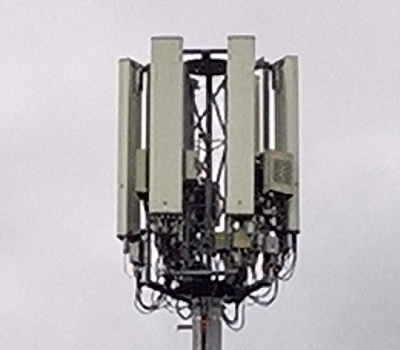
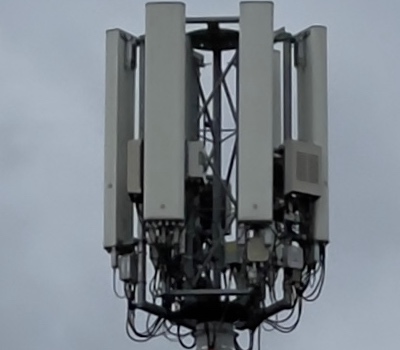

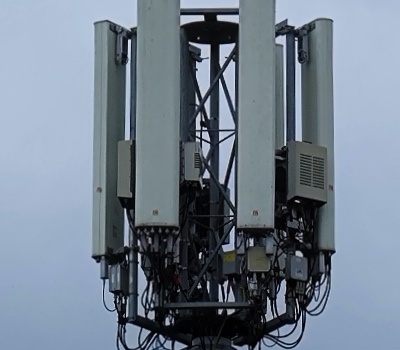
I did say that Xiaomi had superb digital zoom algorithms - as with Samsung, who have also had lots of practice. The 3x digital zoom here on the Xiaomi Mi 11 Ultra has simply stunning detail. I do wonder whether there's some multi-frame detail stacking, as on the Google Pixels, i.e. it takes several shots, then combines them using the tiny wobbles in the user's hands to provide 'intermediate' detail. We have also spotted that when tapping to focus on a zoomed subject the camera software splices in high resolution periscope detail if appropriate, so this kind of subject is perfect for this.
Meanwhile the iPhone and Xperia produce results consistent with phone telephoto sensors and optics. Note that the Sony deliberately doesn't over-enhance or sharpen (thankfully, one can always do this later in a photo editor), while the iPhone (again) is in ProRAW mode and enhancement routines haven't been applied (ditto). Plenty of natural detail, but not quite in the same league as the Xiaomi's clever image processing.
Scores: Lumia 950 XL: 5 pts; iPhone 12 Pro Max: 7 pts; Sony Xperia 5 ii: 8 pts; Xiaomi Mi 11 Ultra: 10 pts
Test 4: Aerial, 5x zoomed
The same scene, but zoomed to 5x zoom (or as near as, depending on device and UI). The new Mi 11 Ultra should shine here with its 5x periscope telephoto, while the iPhone and Sony Xperia are heavily in lossy digital zoom territory. And let's not talk about the Lumia 950 XL in this context(!)
Here are the original photo files, click to download, from Lumia 950 XL, iPhone 12 Pro Max, Xperia 5 ii, and Xiaomi Mi 11 Ultra.
To see what's going on at the pixel level and to assess purity, here are central 1:1 crops from in turn, (top row) the 950, the iPhone 12 Pro Max, (bottom row) the Xperia 5 ii, and the Xiaomi Mi 11 Ultra:
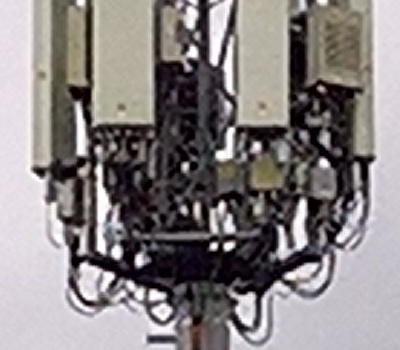
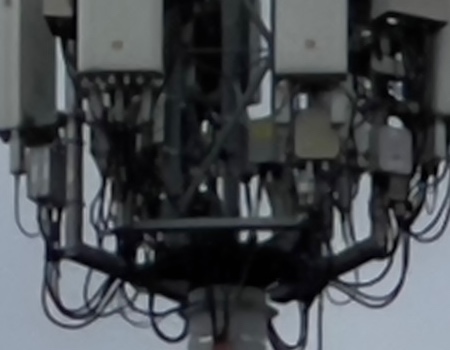
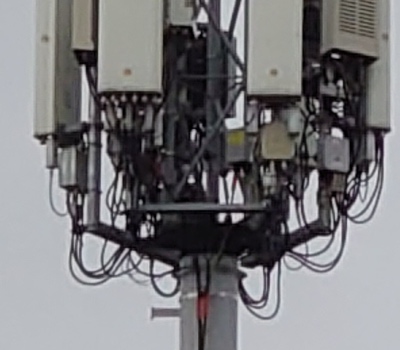
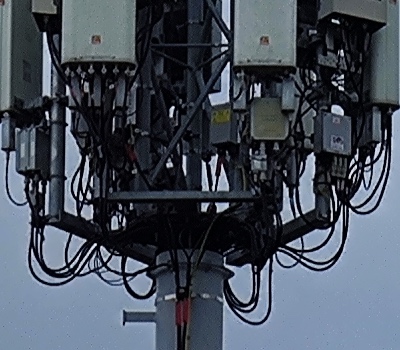
The murkiness of the iPhone's digital zoom here is partly the use of ProRAW (though you could sharpen and enhance it manually) and partly the very grey and overcast conditions - digital zoom does like light! The Sony does slightly better, though at the pixel level here you can see some made up detail. While the Mi 11 Utra wins here, as expected, with its genuine 5x optical zoom - though there's noise and a few artefacts, again light-related.
Scores: Lumia 950 XL: 3 pts; iPhone 12 Pro Max: 6 pts; Sony Xperia 5 ii: 7 pts; Xiaomi Mi 11 Ultra: 9 pts
Test 5: Sunny close-up
Another easy sunny shot, but with a close-up (25cm) still life. Here's the whole scene, manually tapped-to-focus on the tomato with the stem, to avoid auto-focus and depth of field comparison issues:
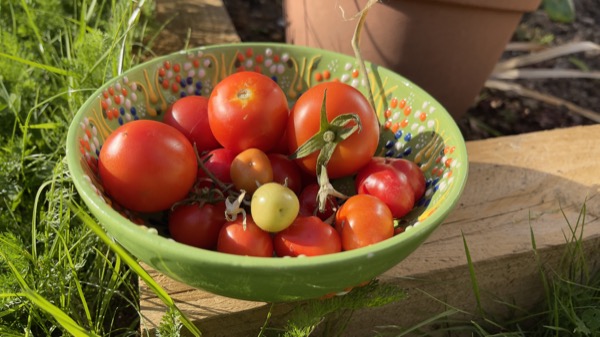
And here are the original photo files, click to download, from Lumia 950 XL, iPhone 12 Pro Max, Xperia 5 ii, and Xiaomi Mi 11 Ultra.
To see what's going on at the pixel level and to assess purity, here are central 1:1 crops from in turn, (top row) the 950, the iPhone 12 Pro Max, (bottom row) the Xperia 5 ii, and the Xiaomi Mi 11 Ultra:
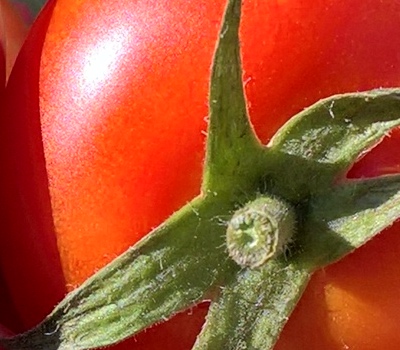
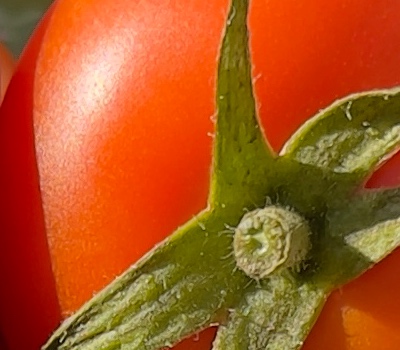
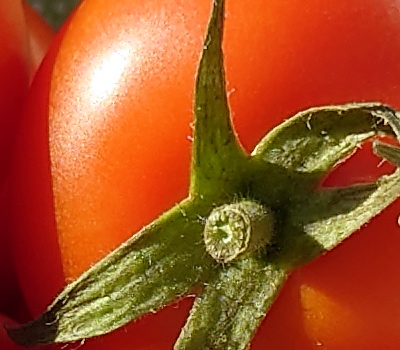
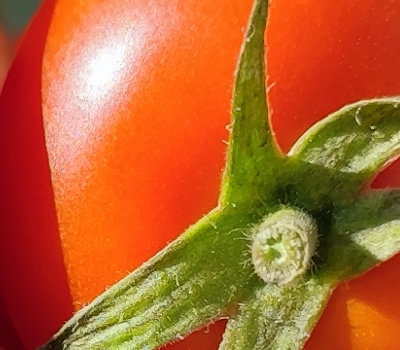
The margins are just too small to differentiate in terms of points. Again the Mi 11 Ultra does impress in terms of colour and dynamic range, but honours are basically even.
Looks like I'm going to have to push these phone cameras further - a lot further.
Scores: Lumia 950 XL: 10 pts; iPhone 12 Pro Max: 10 pts; Sony Xperia 5 ii: 10 pts; Xiaomi Mi 11 Ultra: 10 pts
Test 6: Nature zoom
A tricky subject, treetops rustling in the late afternoon sun, with masses of natural detail, zoomed gently to around 2/3x in order to get the framing I wanted. Here's the whole (zoomed) scene:
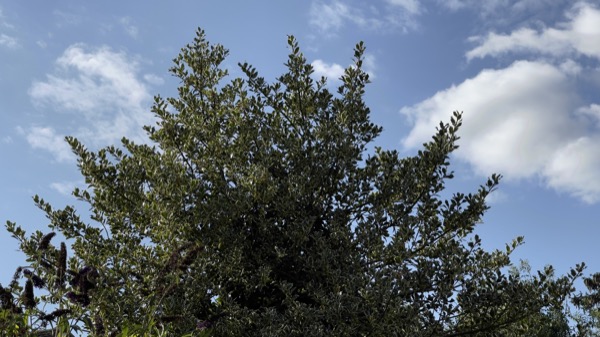
And here are the original photo files, click to download, from Lumia 950 XL, iPhone 12 Pro Max, Xperia 5 ii, and Xiaomi Mi 11 Ultra.
To see what's going on at the pixel level and to assess purity, here are central 1:1 crops from in turn, (top row) the 950, the iPhone 12 Pro Max, (bottom row) the Xperia 5 ii, and the Xiaomi Mi 11 Ultra:
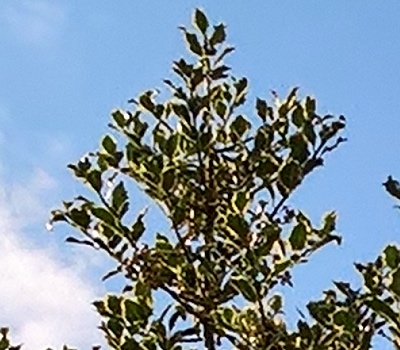
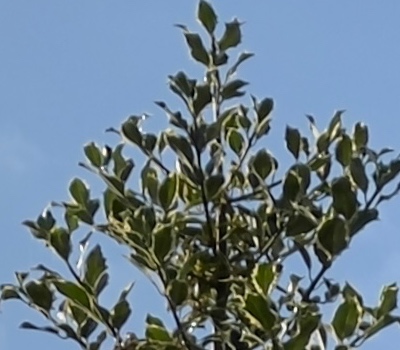


Now this is interesting - you'll remember my theory about the Mi 11 Ultra using multi-frame and multi-camera zoom techniques in order to improve results when below the 5x periscope's range? That method relies on the subject remaining completely still, so that the software can patch together a smart-cropped high resolution central region using natural hand wobble as the random element and multiple frames. But here we have leaves that are 'rustling' and very much not staying still. So the software can't work its magic and the Mi 11 Ultra photo, viewed at the pixel level here, looks about as awful as every other Quad Bayer system trying to zoom.
Of the other phone cameras here, the Lumia's zoom is as blocky as usual, while the iPhone's shot is pretty good and the Sony's is both crisp and nicely coloured against the bright blue sky.
Scores: Lumia 950 XL: 4 pts; iPhone 12 Pro Max: 8 pts; Sony Xperia 5 ii: 9 pts; Xiaomi Mi 11 Ultra: 6 pts
Test 7: Real world zoom
By this, I mean a situation where zoom has to be used because of physical restrictions and where the user isn't thinking about physics, lenses, digital artefacts, etc. They just know the framing they want and the phone camera tries to oblige. Here's the whole scene, showing the problem. In this case it's a fork lift truck, with plenty of intricate detail, but it could equally well be a stage setting at a gig:
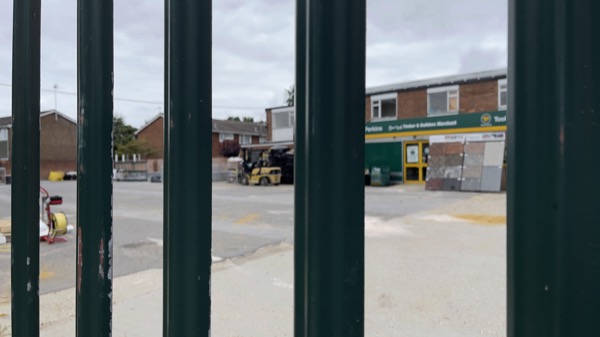
And here are the original photo files, click to download, from Lumia 950 XL, iPhone 12 Pro Max, Xperia 5 ii, and Xiaomi Mi 11 Ultra.
Rather than look at the pixel level, since that would be a mess on all of the units and also wouldn't show what the user was trying to achieve, I've opted to show the whole of each frame, resized for the web/social, from - in turn - top to bottom, the 950, the iPhone 12 Pro Max, the Xperia 5 ii, and the Xiaomi Mi 11 Ultra:
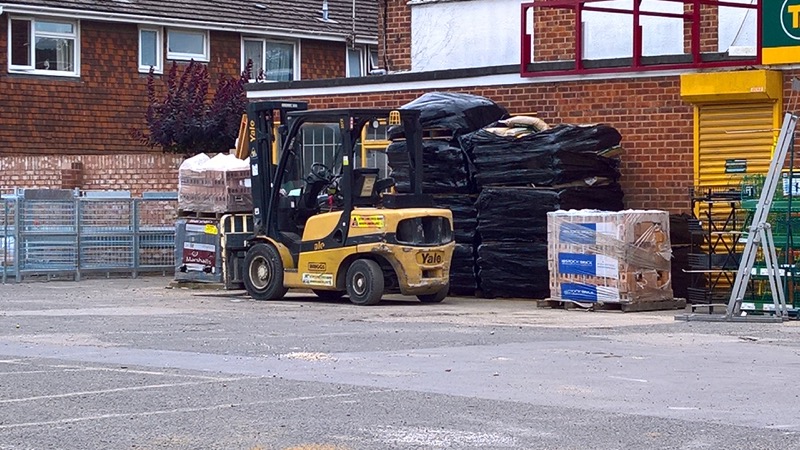
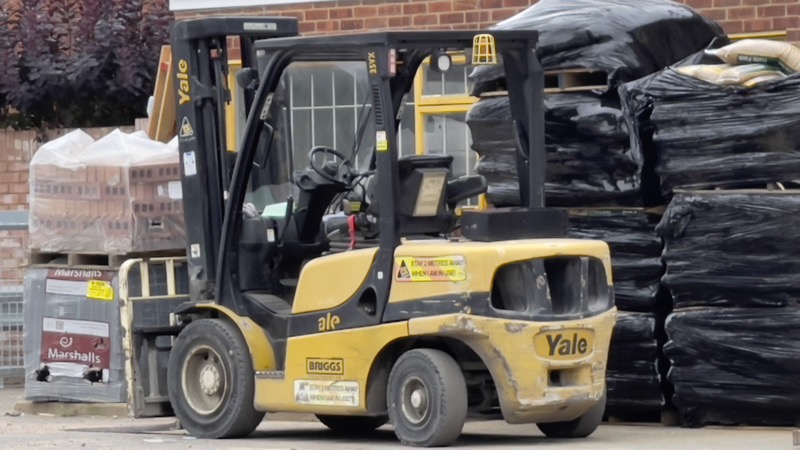
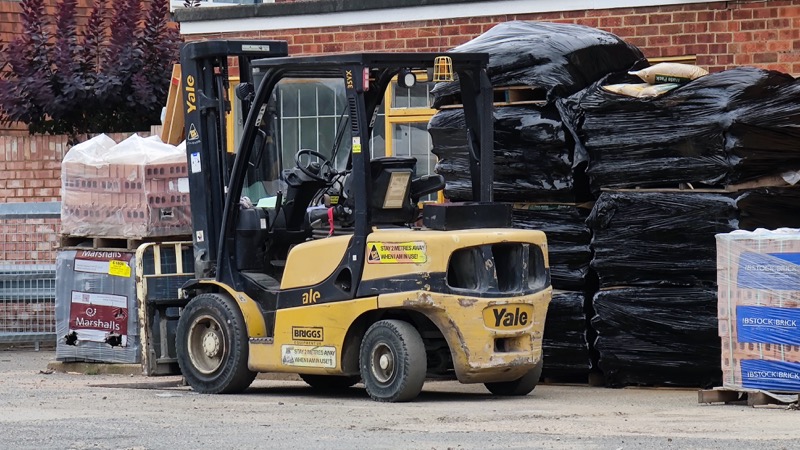
Now, I get it, I'm being a little unfair to the Mi 11 Ultra here - if you grab the full photos then you'll see that - unsurprisingly - its native 5x periscope lens is a better foundation for zoom than the iPhone and Xperia's 2.5x and 3x telephoto. But at social/web resolution, as above, there really isn't much difference. Just a little extra detail and crispness for the Xiaomi.
But it's a valid test. A user snaps a scene on a distant stage, for example, and they want a) to see it large in their phone viewfinder, and b) to use it on a social network, typically viewed on a phone screen. By my calculations, each phone camera was at around 7x or 8x zoom, so there was plenty of digital, lossy zoom involved, yet a lot of the artefacts and uncertainty vanish when you scaled down again for the web/social.
The Lumia, of course, has nothing in its UI or capabilities that can get remotely close to 7x zoom, so it can't compete here.
Scores: Lumia 950 XL: 4 pts; iPhone 12 Pro Max: 8 pts; Sony Xperia 5 ii: 8 pts; Xiaomi Mi 11 Ultra: 10 pts
Test 8: Night time (1)
OK, enough with the easy-ish stuff, let's turn to low light. Here's one of my test scenes:
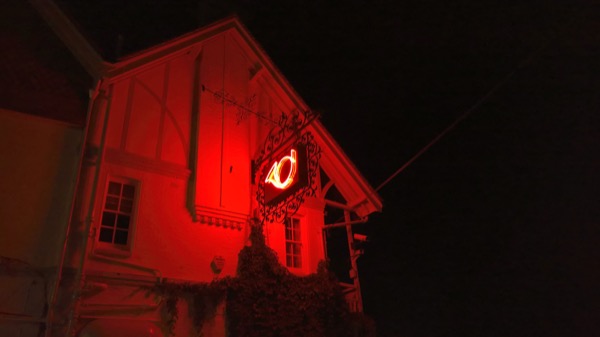
And here are the original photo files, click to download, from Lumia 950 XL, iPhone 12 Pro Max, Xperia 5 ii, and Xiaomi Mi 11 Ultra.
To see what's going on at the pixel level and to assess purity, here are central 1:1 crops from in turn, (top row) the 950, the iPhone 12 Pro Max, (bottom row) the Xperia 5 ii, and the Xiaomi Mi 11 Ultra:

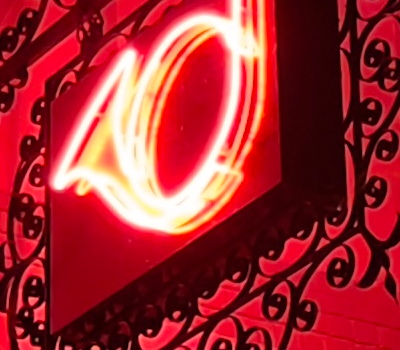

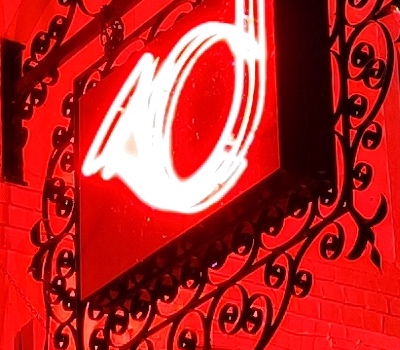
Now, don't get too fixated on over-exposure of the illuminated sign, since that's very much a personal choice of exposure and where one taps in the viewfinder as to how this is handled. Look more at the detail in the surrounding metal frame.
As a result, even though the light was over-exposed in the Mi 11 Ultra shot (see above para), I was impressed by the detail in the frame and the photo holds up to the other contenders here. In fact, I'm only docking points from the Lumia, since it always struggles just a little to focus precisely in low light and detail isn't as crisp. By a small margin.
Scores: Lumia 950 XL: 8 pts; iPhone 12 Pro Max: 9 pts; Sony Xperia 5 ii: 9 pts; Xiaomi Mi 11 Ultra: 9 pts
Test 9: Night time (2)
A typical night scene, with some artificial lights, some intricate car detail in the centre, and even the moon to light the scene and provide an exposure challenge. Here's the whole scene, with both artificial detail and greenery:

And here are the original photo files, click to download, from Lumia 950 XL, iPhone 12 Pro Max, Xperia 5 ii, and Xiaomi Mi 11 Ultra.
To see what's going on at the pixel level and to assess purity, here are central 1:1 crops from in turn, (top row) the 950, the iPhone 12 Pro Max, (bottom row) the Xperia 5 ii, and the Xiaomi Mi 11 Ultra:
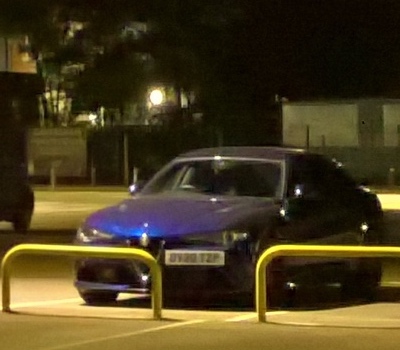
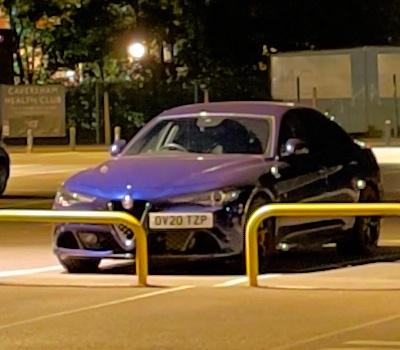
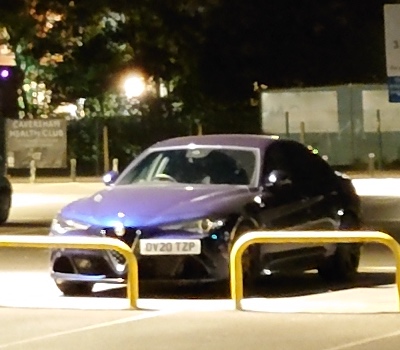
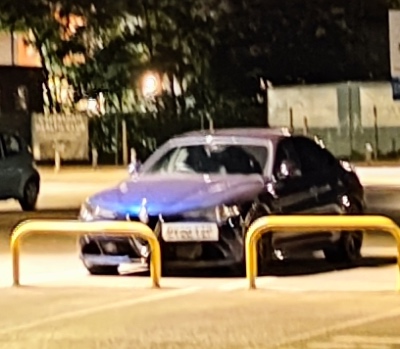
Wow. Just look at that iPhone 12 Pro Max photo - the detail on the car number plate, the colour of the metal, the chrome bits, just wow. Apple just nails its auto-night mode. Full marks.
The others fall short, the Lumia doing well enough but the 2015 sensor is ageing now and even the PureView algorithms can't quite match the modern iPhone. The Xperia 5 ii does better, albeit with some strange exposure decisions, it's trying too hard. The big surprise here is the Mi 11 Ultra, showing - perhaps - that OIS on such a huge sensor and optics stack is not at all easy. It looks like some natural hand shake made it through the OIS and through the frame stacking, into the exposure. Which isn't good.
Scores: Lumia 950 XL: 8 pts; iPhone 12 Pro Max: 10 pts; Sony Xperia 5 ii: 8 pts; Xiaomi Mi 11 Ultra: 7 pts
Test 10: Night time (3)
Another night test, lots of character here. Here's the whole scene:
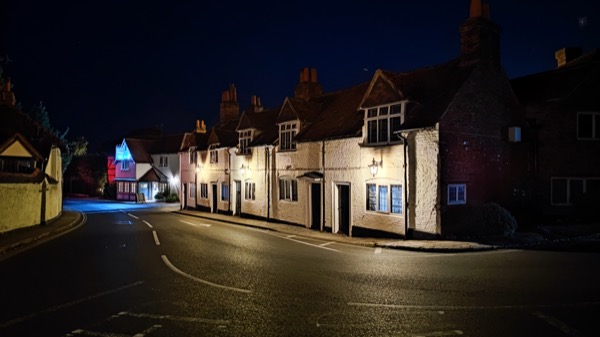
And here are the original photo files, click to download, from Lumia 950 XL, iPhone 12 Pro Max, Xperia 5 ii, and Xiaomi Mi 11 Ultra.
To see what's going on at the pixel level and to assess purity, here are central 1:1 crops from in turn, (top row) the 950, the iPhone 12 Pro Max, (bottom row) the Xperia 5 ii, and the Xiaomi Mi 11 Ultra:
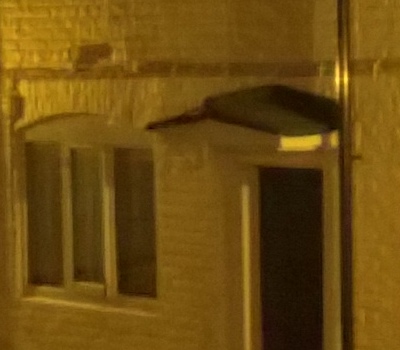
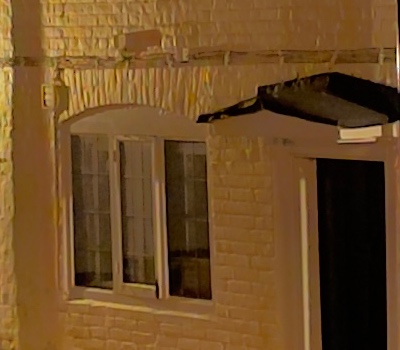
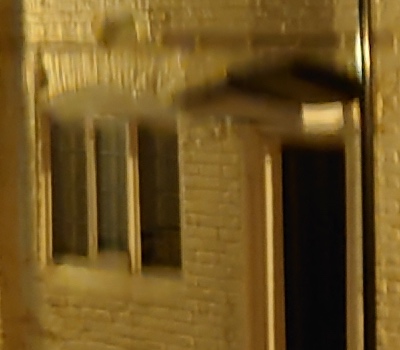
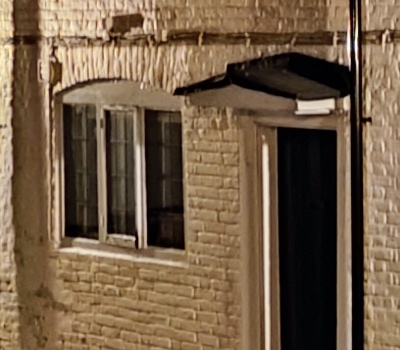
Ah yes, another example of modern phone camera OIS and multi-frame stacking that produces a flawed result - in this case, the Sony Xperia 5 ii, which gets the lighting and colours just right but clearly hand shake got through again.
The iPhone 12 Pro Max nails colour balance and detail - again. It's just the best low light photo-capturing phone right now. The Lumia produces a very decent shot for 2015, but it's a bit out-gunned now in terms of pixel-level detail. The new Mi 11 Ultra overdoes things in terms of exposure and colour, though it's still full of real detail.
Mixed scores all round.
Scores: Lumia 950 XL: 9 pts; iPhone 12 Pro Max: 10 pts; Sony Xperia 5 ii: 6 pts; Xiaomi Mi 11 Ultra: 9 pts
Test 11: Night, low light indoors
A weak table lamp and a water bottle with plenty of label detail at 30cm. Here's the whole scene, I tapped to focus in each case on the Nestle label:
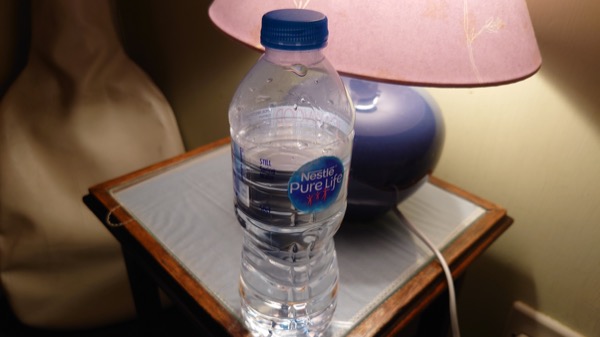
And here are the original photo files, click to download, from Lumia 950 XL, iPhone 12 Pro Max, Xperia 5 ii, and Xiaomi Mi 11 Ultra.
To see what's going on at the pixel level and to assess purity, here are central 1:1 crops from in turn, (top row) the 950, the iPhone 12 Pro Max, (bottom row) the Xperia 5 ii, and the Xiaomi Mi 11 Ultra:
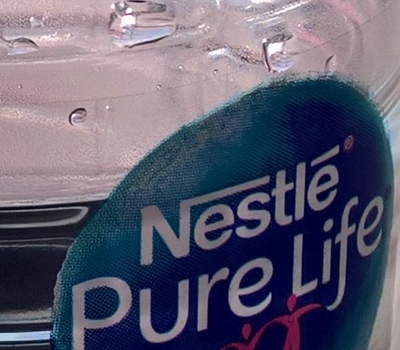

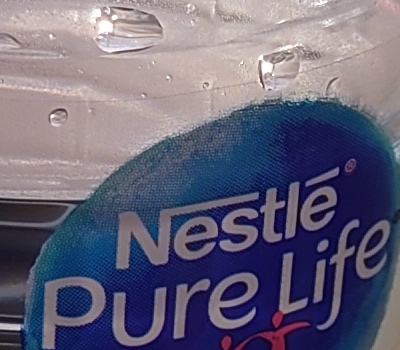

I shot the Xperia photo first in this case and thought 'wow'. Under such low light. And then the other three came good - in fact, the 12 Pro Max and Mi 11 Ultra shots are nigh on perfect, in terms of natural detail and colour. While the Lumia 950 just mangles the colour slightly - the lampshade comes off as halfway to pink!
Scores: Lumia 950 XL: 9 pts; iPhone 12 Pro Max: 10 pts; Sony Xperia 5 ii: 9 pts; Xiaomi Mi 11 Ultra: 10 pts
Verdict
Let's do a count up of my scores:
- Xiaomi Mi 11 Ultra: 100 pts (/110)
- Apple iPhone 12 Pro Max (ProRAW): 97 pts
- Sony Xperia 5 ii: 93 pts
- Microsoft Lumia 950 XL: 79 pts
Effectively close at the top, then, with the champion iPhone 12 Pro Max in its ProRAW capture mode doing as well as usual - in the default mode there's extra edge enhancement which would knock about 5 or 6 off a typical test in my hands. And with the new Xiaomi Mi 11 Ultra right up there too, winning out with that giant sensor (and optics), and with image processing that preserves an awful lot of natural detail - also evident in the file sizes, with a typical sunny day JPEG topping 8MB.
All good stuff. The relatively small and slender Xperia 5 ii does well to keep up with these imaging giants, but ultimately a software upgrade is needed to improve the camera UI and allow for on-screen shutter control (I suspect it was the physical mashing of the shutter button which ruined the 'Sonning at night' shot, despite all the OI and frame alignment). Happily, Sony has revamped its software for the upcoming Xperia 5 iii, and who knows, maybe this will come as an update for the mark ii as well.
While the venerable Lumia 950 XL, now six years old(!), tags along in the same ballpark as long as zooming isn't needed. If you take out the zoom test shots (I know, I know, a big 'if'), then the 950 XL is matching the £1000+ 2020/2021 flagships for snaps and quality/purity. Which is impressive.
By the way, you'll notice the title of this feature, I have several other comparisons to do, with more testing of the AI zoom enhancements, on the Mi 11 Ultra. Watch this space. It's a phenomenal smartphone in many ways, so watch out also for my full video review on The Phones Show!
